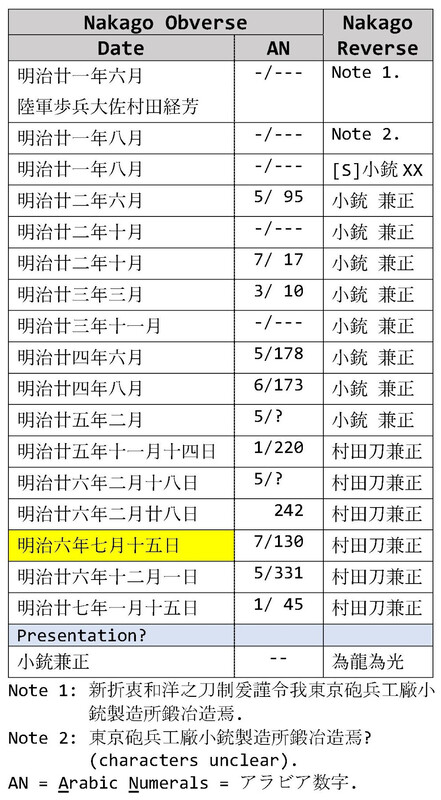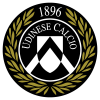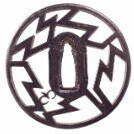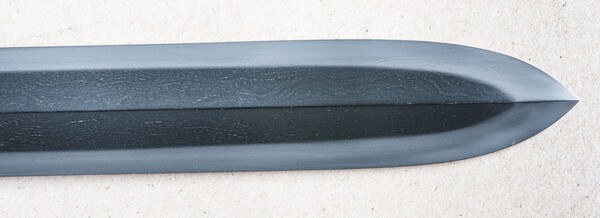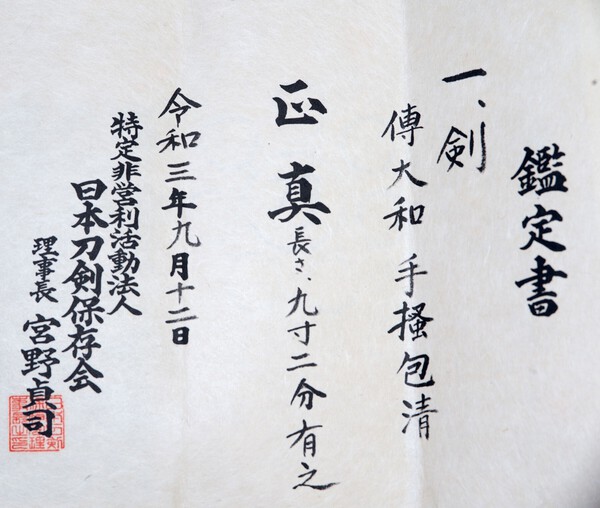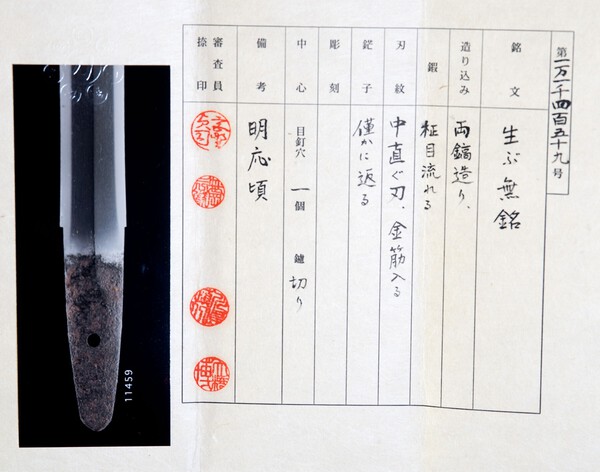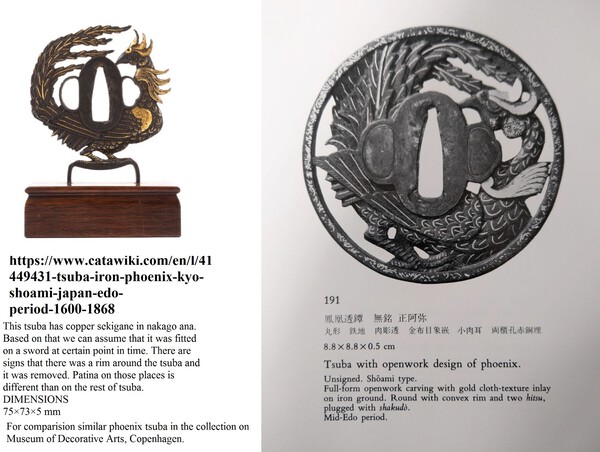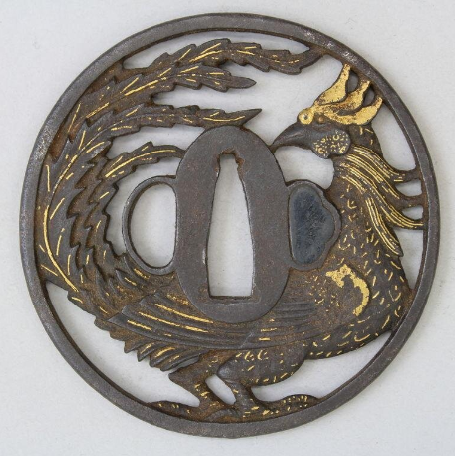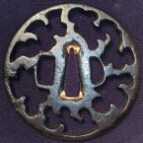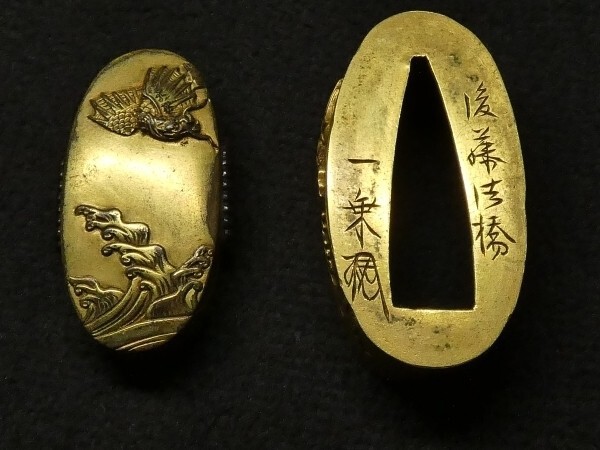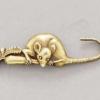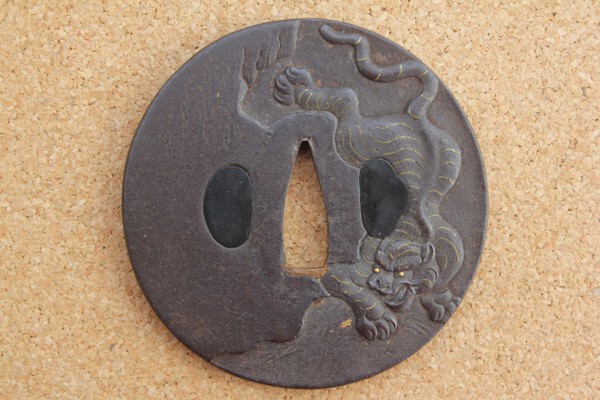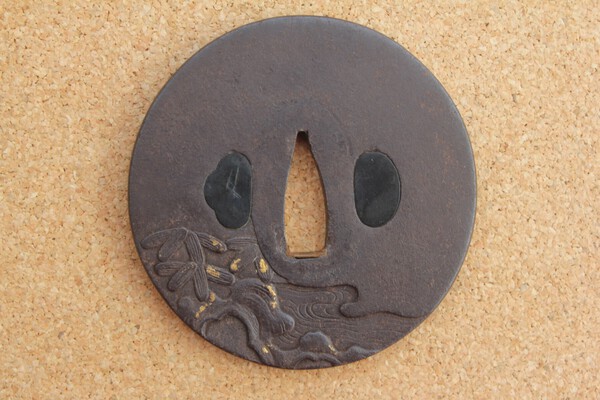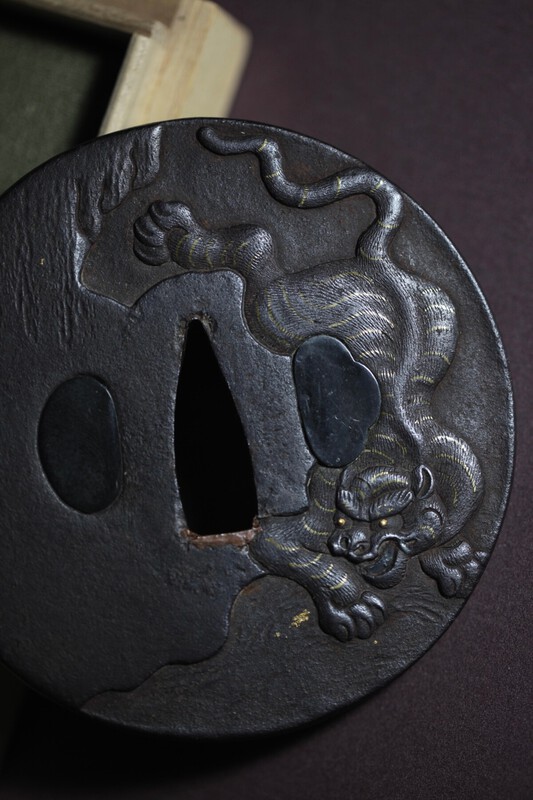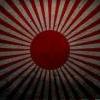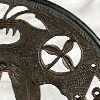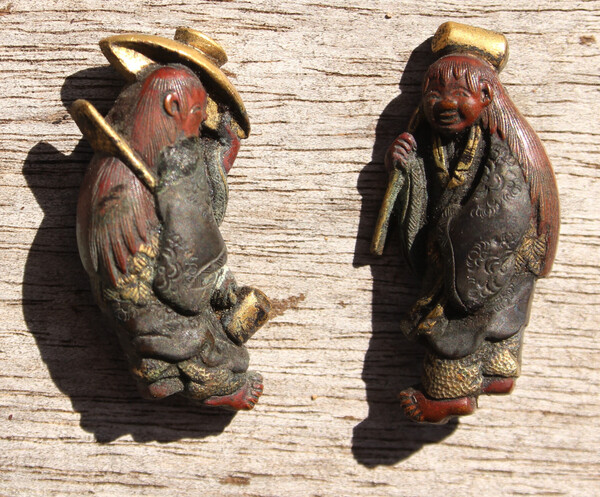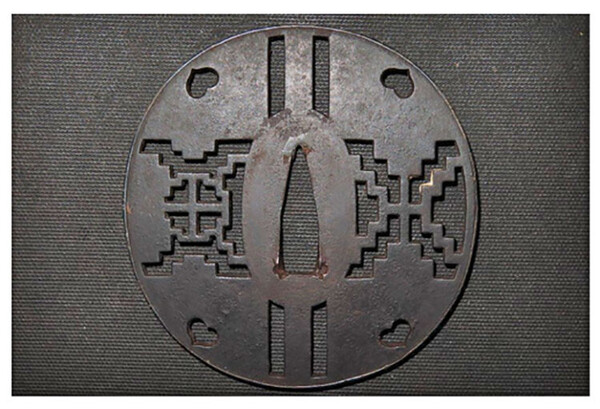Leaderboard
Popular Content
Showing content with the highest reputation on 07/22/2022 in all areas
-
Julian, The problem with this bright red lacquer is that the particles of pigment, vermilion or mercury suphide, have to mask the dark brown colour of the lacquer itself. This involves using a large amount of pigment in comparison with the quantity of lacquer needed to hold the particles together. As a result, the coating of red lacquer is somewhat porous, there being insufficient lacquer to fill the spaces between the pigment particles that fill up with dirt particles. You often see this problem on the inside of face masks which resist all attemps to come clean when wiped with alcohol. The problem with your helmet is that the lacquer on both the red and black areas has become degraded by exposure to light. Lacquer when first applied is a complex structure in which the lacquer particles are surounded by an adsorbed layer of water molecules forming what is known as a micell. Exposure to light results in the water layer being driven off leaving the dull degraded surface. Ian Bottomley5 points
-
Finally oh finally, a tsuba that reminds me of the Arcade & Atari of my youth. https://page.auctions.yahoo.co.jp/jp/auction/t1058204004 SPACE INVADERS! Have we seen any tsuba that remind us of the great Atari! . Perhaps a Missile Command tsuba amongst the Bushu or Choshu schools? -- Who hasn't seen a Tron tsuba at some point? A Video Pinball tsuba?4 points
-
Another oldie but goodie from 2017 about Type 95 Military Swords dressed in white. Hope Shamsy does not mind a link about white in a thread about black! Winter Is Coming...3 points
-
2 points
-
You are of course correct Dan, but I feel like those quotes can be quite easily misconstrued. I could probably detail well over 100 variations of jabs. If we take for the sake of simplicity the assumption that you need to practice a movement (correctly) at least 10k times in order to have it locked in... If you threw 500 jabs per training session, and trained 5 nights per week, it would take you ~1 month per variation to reach a decent standard. It would take you close to 10 years to learn all 100. Each of those techniques would be (close to) useless to you, until you've done your 10k repetitions. You need to train with sparring partners, so you can hardly keep the technique secret (from your training partners). But when you've got 50 variations locked in and ready to go, you just throw a jab and it'll be the right one, thrown correctly. You reach a point where it's not about technique, you're giving no thought to technique, only thinking of higher level strategy. Akin to hitting a button on a fighting game. If a professional sportsman starts thinking about his technique mid game, he's sure to lose. Which really is to say that technique is important, in fact it's vital, technique should be the focus of countless hours in the gym. Technique is vital and technique training (whether in weightlifting, track and field, martial arts, ball sports, etc) is essential to high level performance. It only seems to disappear when you've mastered the techniques to such an extent that you've truly made them your own and adapted them to your own anatomy. I felt it worth saying as I've had this discussion with many students over the years. To be beyond technique and just generate force optimally is the ultimate goal, but the way to get there is though countless hours of technique training (usually with many, many variations over the years).2 points
-
https://www.aoijapan.com/katanashoju-kanemasakogarasumaru-shape/ A numbered blade for Bruce, in an unfamiliar Kyu koshirae to my knowledge2 points
-
Hello all! Thomas, thanks for the invite to show me the “other type” of sword draws! Unfortunately, I don’t think that is a possibility. I noticed your post on this thread about the patination on a tsuba. Maybe you made an error? My thoughts are perhaps that should be a “new thread” in itself? Also, I was not laughing at you. If you thought that then I do apologize. I was just “surprised” on the “700” number that you came up with. I am also aware that there were many “secret” type of techniques that were taught and passed along orally to students. Probably, many of those “secrets” were “lost over the years”. But since you brought up the subject of “secret" techniques, I have found a few quotes from “The Art of Peace” by Morihei Ueshiba- Ninety-Four- Progress comes To those who Train and train, Reliance on secret techniques Will get you nowhere. Ninety-Five- Fiddling with this And that technique Is of no avail. Simply act decisively Without reserve! One Hundred Two – Ultimately, you must forget about technique. The further you progress, the fewer teachings there are. The Great Path is really No Path. Some interesting stuff! With respect, Dan2 points
-
I do not think it is trickery, they say in the description that the Sayagaki has nothing to do with the blade and it is from edo period... What do I miss?2 points
-
Peter - I have to ask - what are your collecting/study goals? My Japanese is very limited but I pore thru the magazine each month and I do the shijo kantei exercise, I am just rarely correct - so just cause you do not see the names it doesn't mean more people aren't trying. Riv come hang out with us - starts with being social then we get together for serious study... Lots of young ladies into swords now in Japan and as we all know "The Japanese girl of today is the Japanese mother of tomorrow!" Whatever it is you want out of the hobby you have to let people know - you need to be active and vocal - don't expect folks to read your mind or to change the way things are done because of one members complaints. I am working hard on improving our content, would love to have yall's feedback. (Ralph Bell imitation ends here...) -t Support your local sword club!2 points
-
Nowadays everyone uses the Gregorian Calendar, where ichi gatsu = January. Before Japan switched to the Gregorian calendar in 1873, they used the lunar calendar, which means ichi gatsu = sometime in late January or February depending on the year. When translating old (say, pre-1873) signatures, its a pain to try to be faithful to the lunar calendar, so even on old inscriptions we (or, I should say "I") tend to just translate ichi gatsu = January, and so on. It may not be chronologically accurate, but there is a linguistic simplicity and consistency to it that most people find more satisfying rather than trying to figure out when exactly the months started 300 years ago. Also, many swords carry inscriptions that bear auspicious dates (February and August, typically) rather than the exact date the sword was made. A swordsmith may have made a sword in April or May, but the swordsmith would still inscribe it with "a lucky day in the second month" because it was customary to do so (or the client may have wished it that way). So given the auspicious nature of the dates on many swords, it is something of a fools errand to try to faithfully transpose lunar dates into Gregorian dates, and better to consistently use Gregorian dates.2 points
-
This was just posted by Andrew Ickeringill ( @Andrew Ickeringill ) on Facebook, and I thought it was worth posting here, and pinning for the future. Andrew is a FULLY trained traditional polisher and one of the most qualified to make these statements. Before bringing up the subject on this forum, and risking a storm of fire, please read this and take it to heart. Amateur sword polishers… I know you probably won’t listen, but I’ll try anyway. Recently, I’ve been seeing more and more rubbish from amateur polishers on the internet, it’s not a new problem, but with social media being what it is, amateurs have been given a platform where they can prosper. It’s beyond frustrating, it’s infuriating, and it's working directly against what I'm striving for, the preservation of Nihonto. I’ve had to correct the damage caused by amateur polishers many times, and the damage is always severe. Correcting these hack-jobs takes a lot of work, and it means removing more steel than would’ve otherwise been necessary if the blade had previously gone to a traditionally-trained togishi. A traditional apprenticeship in togi takes years to complete for a reason, THERE’S A LOT TO LEARN! It means giving up everything else to spend your time in servitude to Nihonto. My apprenticeship was 12 hours a day / 7 days a week / for over 6 years, and even my spare time (what little I had) was usually spent studying nihonto. But if you want to be a togishi, this is the way it must be, you have to go all in. Through arrogance or ignorance or both, amateur polishers have completely forgone this necessary training. Some of them may have attended seminars in Japan, or visited a togishi for a few days… but this obviously doesn’t equate to traditional training. And for many amateurs, the bulk of their training consists of reading books and watching youtube videos of swords being ruined without a clue. Unfortunately, these videos receive plenty of misguided encouragement from those who don’t know any better… “wow, so shiny!”. Amateurs will often argue… “this sword isn’t worth sending to a pro, should we just leave it to rust?”… but how would THEY know? They haven’t been trained in kantei, they have no idea if a sword is worth a professional restoration or not. A cold chill passes up my spine every time I think about this, how many great swords have been ruined by amateurs? I know I’ve already seen a few in my time. If you’re an amateur polisher reading this, let me give you a tip… this job is not for you. This isn’t something that should be attempted by anyone but a traditionally trained togishi, and if you haven’t realised this fact by now, then you need to develop more respect for Nihonto and the craftsmen who have worked their butts off to complete the proper training. Please stop scraping the life away from these works of art, you’re doing far more damage than repair… this job is not for you!1 point
-
Hi all, Just a notification of a little possible downtime for an hour or 2 in the next day or 2. We are updating server PHP software, so if you get any pages not available, it should be up shortly thereafter. Brian1 point
-
Yamato Ken, mumei, Yamato Tegai Kanekiyo (NTHK), Meio jidai (1492-). Ubu. Masame throughout, nie hamon. 28cm. 2.5k USD. Substantially below what I paid for it unpapered - I was certain it was Hosho! Very strong work. There is a scratch in the polish, otherwise condition is good, Japanese polish but not my favorite type unfortunately. I was way too lazy not selling some of the items until yen collapsed... Now they have to be downpriced accordingly. Full or partial trade is of interest, but interested only in "interesting" items. Will be selling it at SF sword show, please see my table. All blades have habaki, shirasaya, sword bag. The work is very tight and clean, but there is always one week inspection period to make sure.1 point
-
Hello all! I know this post is somewhat “off the thread” but I wanted to respond to Mark- Mark, thank you, sensei. Of course, you are correct in the amount of training required to achieve “muscle memory” and a “non-thinking” response. To have to “think” of doing a move before doing it can waste milliseconds and result in defeat. I have been fortunate to have competed in International and National (both types of tournaments in the United States) competitions in karate. Personally, I think I have forgotten more karate than most people have been taught! I was 63 at my last National competition, and now only train (at 72 – probably never will compete again, but then again “never say never”!). Hey, too much “feeling the pain” nowadays! I have been taught many things in my 37 years of training (yes, I started training when I was 35 – what was I thinking!). But now after all the hundreds of techniques I have been taught I keep training in only a couple of them. Maybe only 3 types of blocks, 3 punches, and 2 kicks. But those have been done “with no thought” for many years. I fully agree with you, and I feel that “strategy” is much more important than any kind of “secret” technique. An opponent can throw his “secret” technique. But with maintaining proper distance and “watchfulness” any “secret” technique can be neutralized. Again, just my opinion. With respect, Dan1 point
-
Very much looking forward to the sword show! This will be my first show and first Shinsa. -George1 point
-
The dream sequence is 一富士二鷹三茄子 Ichi Fuji, ni taka, san nasu, so aside from the pines, there should be a hawk or two on the other side, no?1 point
-
Wonderful Nihonto for sale by Rivkin at very reasonable price👍👍👍1 point
-
1 point
-
1 point
-
1 point
-
Paz, I have to agree with Colin with regard to the lack of knowledge displayed by many UK auction houses, but equally I wouldn't know a genuine Irish peat container from a galvanised bucket so each to his own. I also find that many auction houses tend to illustrate those parts of swords they think are important or interesting and not what members of this forum would need to make a judgement. Most however will add further images if you ask - don't forget it is in their interest to get the highest price they can. As for the quality, yes, a great deal of junk turns up, but there are exceptional swords as well. It is up to you to spot them and hopefully win one. Ian Bottomley1 point
-
Well as I've mentioned few times that I have a "sword database" that I am building and I've also mentioned that I have some online prices stored up. As I am not a commercial guy I thought I'd share the price list to NMB. Sharing is caring right? The idea for this came to me some years ago as I was constantly listing the few favorites for potential purchase, and that list was evolving all the time. As I removed sold ones off and saw that I started to get more expensive swords to the list that I could not even dream of getting. So I thought I should just let the swords stay in list even if they were sold. Here are few words about the price list, there are about 1750 swords listed, I have direct links to about 1600 swords that you can just click and they should take you to the sword. About 1250 swords have their prices listed. The really high end swords usually don't feature the asking price. And I have taken out some prices that I've got to know privately, as I wanted to keep this so that all info in this is/has been open to public. And private information that has been said in private should not be in my opinion distributed on open forum. The cut off point in the list is approximately around 1450's (I know I still have few dated ones in the 50's). There might be some errors that I've put a smith under wrong school or tradition (or even have the wrong smith) but I've tried to minimize them and tried to correct most to my actual database. Sometimes it is quite difficult to pinpoint the origin of some smiths. This is kinda barebones version as for example I've put mei and measurements to my real database. I just wanted to have this document as easily viewed and quick as possible. The document has headlines, so when you open it it should be 1.tier Province 2.tier School 3.tier Smith etc. Granted I didn't make headlines for all the smiths. For example there are 2 Sōshū Masamune in the list, so I thought it wouldn't be necessary to make a headline for him as he can be easily found through search or just going to the Province. Once you start using it for the first few times it should be quite easy to navigate. Especially when you use ctrl+f to get the headlines tab open. Then you can just move fast by clicking various schools. The format on the document is like this Smith or School - Type of sword (mei or mumei) - [koshirae] if there is one featured Length in cm - price of the sword - authentication paper - seller of the sword Direct link to the sword I might have messed it up in some place but in general the classification arrangement I used would be odachi -> tachi -> katana -> naginata -> naoshi -> wakizashi -> tanto -> others I hope members will find this useful Miekkojen hintaseuranta NMB version 1.docx1 point
-
Another one for @mecox to add to Japanese Naval Swords and for @Bruce Pennington to ponder a large Seki stamp on a 1944 dated blade. Good luck to you both! 関 = Seki (stamp). 大道 =Daidō. Red paint: 二八六七 = 2867. 昭和一九年 = 1944. Green paint: イ四二 = I 42 (I as in the letter i). @Eds, does any of the parts have a stamped number on them that match the above two numbers?1 point
-
A heuristic for acid “polishing” is: the Jigane has become unnaturally black, the hada has become weirdly coarse with all the grain opening up, the hamon has become oddly flat and bright whereas a normal hamon is subtle when light isn’t shining and dynamically bright when illuminated. Often acid polishers will be total amateurs like the ebayer who’s account name ends with 22, they can’t polish at all and use ferric chloride to make details visible. I’ve also heard some Japanese dealers take swords with mediocre polishes and give them Ferric chloride baths to make the details look flashier to new collectors. Ferric chloride is still really bad for a sword’s health, etches the surface, and leaves the sword primed for untreatable deep rust1 point
-
A friend showed me one of these bells in a circle Tsuba and pointed out the number of knobbles on the outside of the bell, with a photo copy of its provenance. The price was around US $10,000+ as I recall.1 point
-
Item No. 244 Iron Tsuba with gold 8.05 cm x 7.95 cm x 0.55 cm Subject of tiger and bamboo next to running water. Mumei. Late 18th cent. ? Nice composition of fiercely animated tiger - not one to meet at night ,not even in your nightmares. This is the first of a number of Tiger pieces to be posted over the coming months.1 point
-
1 point
-
It is the eventual dating of links and removal of listing's that has prompted us to collect images here as opposed to early on when I shared links. The images already in this thread probably cover all the older or more 'classic' fakes, which would have been listed in that original link.1 point
-
Gents, Once again, it was confirmed that dealing with established sellers who post their items here on the NMB is the best thing to do. I have bought a tanto from @Brano, and besides the fact that the sword is lovely, the execution of the deal was flawless, and the communication a real pleasure. Thanks a lot Branislav!1 point
-
1 point
-
Beautiful, but quite difficult to decipher. Hopefully someone with a high level of calligraphic/sōsho/grass script reading skills can take a lookl1 point
-
But first, read about the Shōjō: https://yokai.com/shoujou/ Then read (‘wade through’) this document I prepared for my Collection files (attached) derived from the internet, with salutations to Micky Bumbar (Lords of the Drinks)/ January 28, 2018. The Shōjō photos are there too, but for the curious and slow readers here are the menuki without wearing out your eyes. Sadly, they came out of an old and neglected tsuka and surely need the attention of a metalwork genius. Mickey Dumbar's Shōjō story from the web.docx Best regards, BaZZa.1 point
-
It's inevitable. There are always security updates to prevent malicious attacks, and the newest update to the software (nothing major) requires a newer version of PHP. So we have to do it. I am determined to keep software up to date. Another small militaria forum I run on bayonets was hacked, and all the files changed. It's not fun at all. Brian1 point
-
1 point
-
Excellent! When I started out and told my teachers that I was interested in Shinshin-to they all laughed, "You have to study Koto!" so you're in good company. It is a huge area indeed but that is what makes it all so enjoyable. Roughly there are four paths; Art Appreciation - study of the swords as art and kantei is the tried and true method for gaining knowledge in this area. Craftwork - construction, molding, forging, polishing, all the things that attract the "Hammer Monkeys". Fittings - mountings and all the bits and bobs that adorn the sword. History - the context, politics, fads, art and societies that influenced the sword. (I fall mostly into this last category) However you will see overlap in all these areas and long time students will understand you have to have knowledge, at least a little bit, in each of these areas for true appreciation. Ms. Halchaks book contains much the same information as what you already have but presented in interesting ways that may help cement some in your minds eye that others do not. Lonnie Kapps book is a must for everyone - no other book presents the processes of construction, forging and polishing in an understandable format like The Craft of the Japanese Sword. Of course if you want to delve deeper into this area his newer books provide lots of great information. On kantei in a swordless world - for more than ten years I studied the paper kantei (Shijo kantei) and monthly kantei notes in the NBTHK and NTHK magazines - when I couldn't read Japanese and I had no ready access to live blades. Once I got to Japan I had to learn a whole new set of kantei rules when looking at the real thing but that early study helped immensely. I recommend you join the NTHK and NBTHK and any other organization offering regular "paper kantei" these challenges help you to see swords the way the Japanese do and cement the terms and their importance in your minds eye. Do this and when the Society does start meeting again you'll be ready! -tch1 point
-
Hi Francesco in a life or death battle, your friend can have the Chinese kitchen knife and I’ll have the katana. When chopping vegetables he is welcome to the kitchen knife. Absolutely pointless debate. How many 1000 year old Chinese kitchen knives has he seen?1 point
-
I didn't say I didn't remember - I said or meant "I don't know about this having any connection to..." and please we used to have to drive 30 minutes out of town to the airport terminal just to play pong and when our five bucks in quarters was gone we had to go home!0 points
-
0 points





